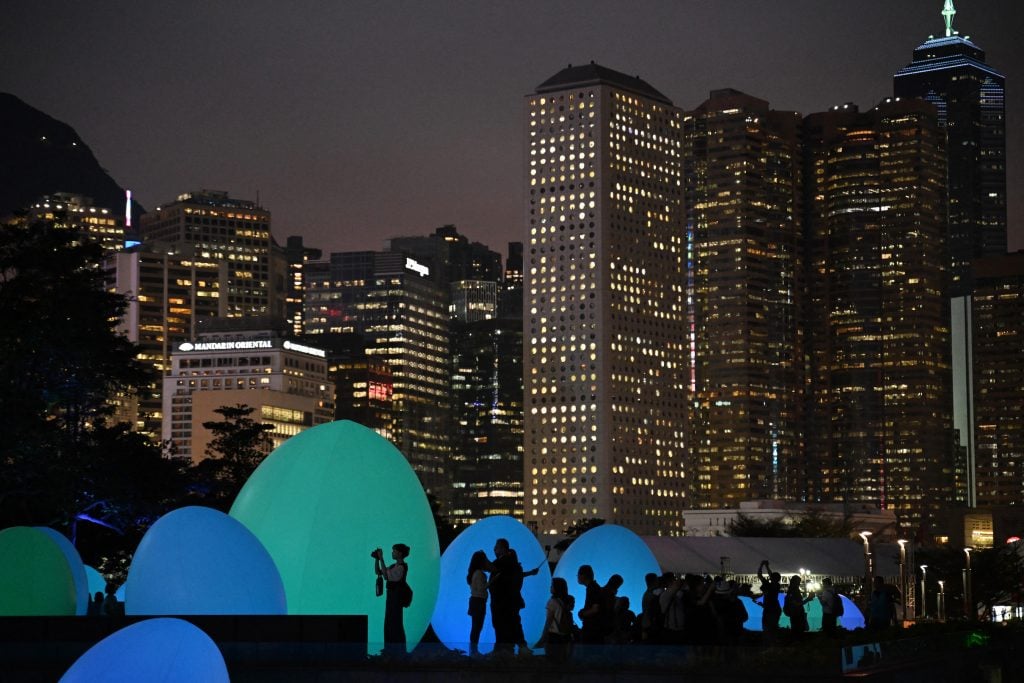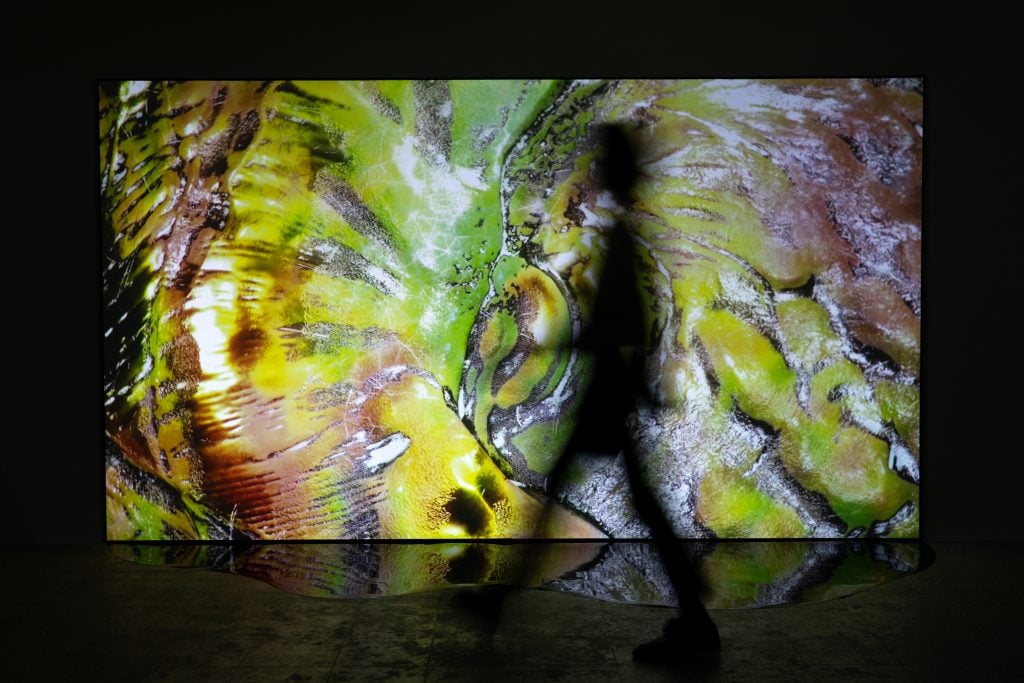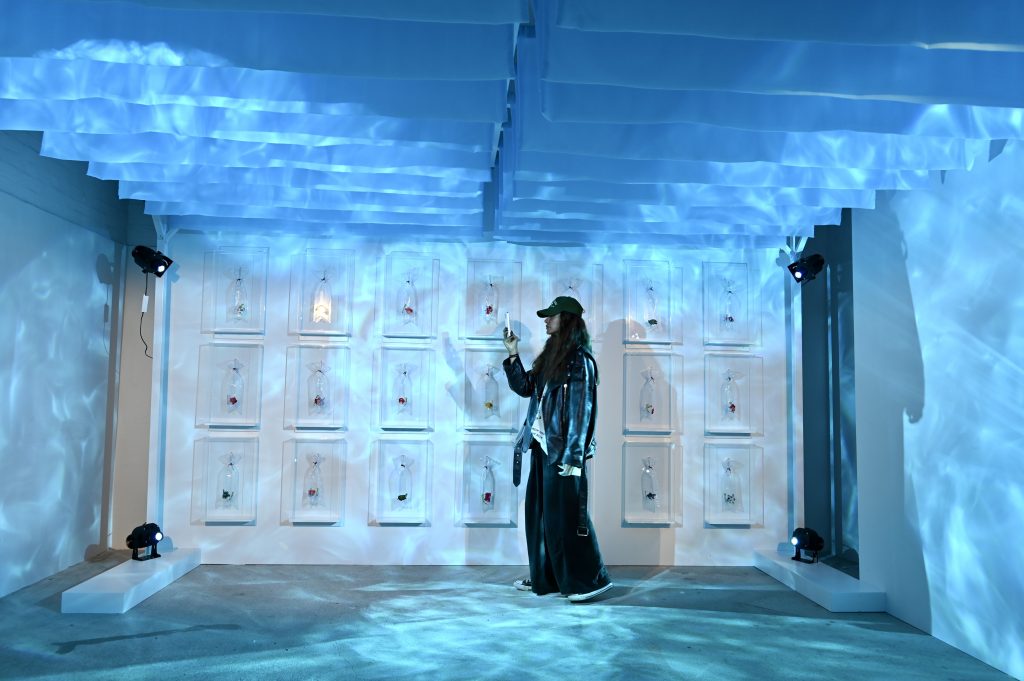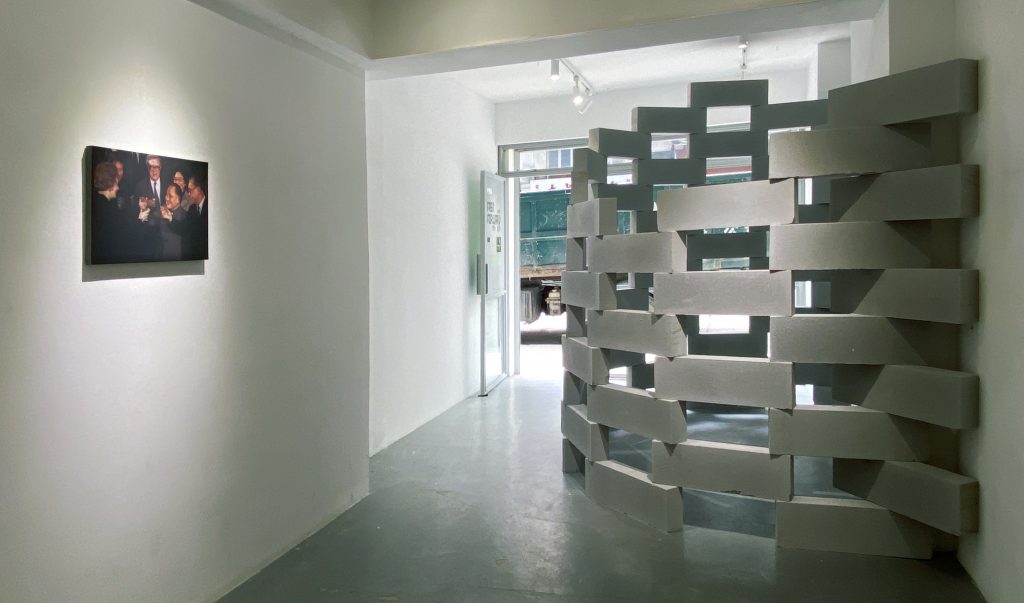Market
Art Industry Power Brokers Are Out in Full Force for Art Basel Hong Kong
Despite political and economic challenges, Hong Kong's art world players are resilient, bringing top-notch offerings to visitors.

Despite political and economic challenges, Hong Kong's art world players are resilient, bringing top-notch offerings to visitors.

Vivienne Chow

When curator Cusson Cheng and gallerist Charlotte Lin decided to open their new contemporary art gallery Podium in Hong Kong’s robust art district Wong Chuk Hang this month, their ambition raised many eyebrows. They have been asked repeatedly why they chose to start a business in times of uncertainty, especially in a city that has been facing immense political and economic challenges.
“It’s true that we are facing a lot of uncertainties around the world right now, we both feel that wherever that’s danger, there are opportunities,” said Cheng, who serves as Podium’s curatorial director, whereas Lin acts as the gallery’s executive director.
Both locally-rooted with solid international experiences, Cheng and Lin envisioned a gallery that brings together “compelling aesthetics, scholarly complexity and commercial viability.” The gallery’s inaugural exhibition “Weirding Worlds,” featuring female artists, the New York-based Shuyi Cao and Anastasia Komar, as well as So Young Park, who is based between Seoul and Berlin, opened on Saturday (March 23). “There’s never a perfect timing to start a new project. What we can control is to find our opportunities,” Cheng noted.

Installation view of ‘Weirding Worlds,’ the inaugural exhibition of Hong Kong gallery Podium. Courtesy of Podium.
Podium is only one of the many local players who are making a splash during Hong Kong Art Week. As Art Basel Hong Kong, Asia’s most important art fair, returns to its pre-pandemic scale with 242 galleries this week, the city’s art industry practitioners, both commercial and non-commercial sectors, are out in full force to put together for an eventful calendar.
This iteration of Hong Kong Art Week is more pivotal than ever. A year after the prolonged and stringent travel restrictions were lifted, the city is facing unprecedented challenges despite the fact that the related protests and social unrest are long gone. Hong Kong’s status as a global financial center in the region has been called into question; last week’s passing of a domestic national security law under Article 23 of the Basic Law, the city’s mini-constitution, also drew severe criticisms from the international community. Both Hong Kong and Beijing hit back saying that those remarks were smearing and spreading fears.
But to art world players on the ground, working together to show the world that Hong Kong still has a vibrant and resilient art scene and market is their top priority. “Hong Kong has proven time and time again that it is not going anywhere. All the major auction houses, galleries, and museums are in Hong Kong and the city’s financial system is structured for trade of goods to be as simple as possible,” noted Amanda Hon, managing director of Ben Brown Fine Arts, Hong Kong, and co-president of the Hong Kong Art Gallery Association, in the Artnet Intelligence Report. “Nowhere have I experienced a city that is as collaborative as Hong Kong.”

A visitor takes photos of an art installation by artist Angel Hui Hoi Kiu during ‘Time Imprints: Tracing Traditions’ exhibition at Tai Kwun on March 18, 2024 in Hong Kong, China. (Photo by Li Zhihua/China News Service/VCG via Getty Images)
In fact, the city has seen the emergence of new galleries over the past several years, and the local Art Gallery Association has also recently acquired new members of younger galleries including Young Soy Gallery, Square Street Gallery, and WKM Gallery. The association said currently it has 54 members, compared to 62 a year ago, because some galleries changed their business model and no longer operate a physical space, which does not fit the association’s membership requirement. Not all existing galleries in the city are association members.
Many of association members have taken part in programs such as Southside Saturday, which saw a stellar line-up of exhibition openings of galleries located in the Southern district of Hong Kong island. On Monday, more than two dozens of galleries located in the city’s Central district joined hands for Central Gallery Day.
Independent art space Parallel Space in Kowloon’s Sham Shui Po district, which is celebrating its fifth anniversary, is running a show titled “Fast Forward.” Conceived by the locally-based anonymous art collective Phew, the show revisits the changes seen in Hong Kong through news archives over the past 40 years, since the Sino-British Joint Declaration was signed, deciding the fate of the former British colony in 1984, as well as the uncanny connection with the title of George Orwell’s classic novel. The show runs through March 31.
The three-day International Cultural Summit, organized by West Kowloon Cultural District and closed on Tuesday, welcomed nearly 2,000 delegates from around the world. The institution M+, which is located in the district, also hosted a big party against the backdrop of Hong Kong’s skyline on Monday night.

Installation view of ‘Fast Forward,’ an exhibition conceived by Phew, an anonymous Hong Kong-based art collective, at Parallel Space, Hong Kong. Courtesy of Parallel Space.
On the art market front, the latest Art Basel and UBS Global Art Market Report noted that China, including Hong Kong, surpassed the U.K. as the second-largest market, with its share rising to 19 percent in 2023. Data from the Artnet Price Database shows that the total fine art sales in Hong Kong in 2023 totaled $1.27 billion, down by nearly six percent from 2022’s $1.35 billion, and nearly 30 percent less from 2021’s peak at $1.8 billion. The number of lots sold in 2023 was 6,242, nearly 30 percent down from 8,704 lots in 2019, the highest in five years.
Nevertheless, Hong Kong’s art market is not just about local sales, as it serves as a platform and trading hub for those who are from the region and beyond. In other words, the data reported is also in-line with global trends. At the same time, art industry giants still cast a vote of confidence for the city: Auction houses such as Sotheby’s and Christie’s are opening their new Asia headquarters in Hong Kong this year, with previews of their premises scheduled for this week. Hauser & Wirth opened a new street-level space earlier this year.
“It’s undeniable that the market has softened a little bit, but it’s cyclical and it’s in the course of correction. The clients we work with still have a strong interest and they are continuing to look at works that will fit into their collection and will stay relevant,” said Jonathan Cheung, a Hong Kong-based art collector and also a co-founder of Art-Bureau, an independent advisory. He welcomed visiting art patrons to his private collection on Monday.
Cheung also expected diverse offerings at Art Basel. “Even mega galleries and very established galleries are bringing a mix of works by younger artists that have not been introduced in the region. I like this kind of discovery,” he noted.

Art Basel Hong Kong 2024. Courtesy of Art Basel.
In addition to Art Basel, satellite fair Art Central also returns and for the first time back to its iconic home at Central Harbourfront since the pandemic. Twenty-six galleries exhibited pre-pandemic are returning this year, making the total exhibitor number to 97, just a few down from 2019’s 105. Meanwhile, Supper Club, branded as an alternative art event featuring more than 20 regional and international galleries, debuted on Monday at the historic Fringe Club.
“The artistic landscape and market in Hong Kong have evolved since 2019, with scores of new galleries in the city and beyond. We’re seeing strong interest from young galleries from across Asia, and especially mainland China, that sprung up during the pandemic and are just now at the stage of doing international fairs, bringing an exciting mix of new art and artists to the market,” noted Corey Andrew Barr, fair director, Art Central 2024.
At Art Basel, highlights include the Encounters sector curated by Alexie Glass-Kantor. On view is Hong Kong rising star Mak2 (Mak Ying Tung) of de Sarthe Gallery, the Singaporean-born, Berlin-based maverick artist Ming Wong (Ota Fine Arts), and Haegue Yang, based in Seoul and Berlin (Kukje Gallery, Kurimanzutto, and Galerie Chantal Crousel).

Installation view of Mak2’s Copy of Copy of Copy of Copy, featured in Art Basel Hong Kong 2024’s Encounters sector. Courtesy of de Sarthe.
Hong Kong-based gallerist Pascal de Sarthe admitted that Mak2’s immersive large-scale site-specific installation at the fair, Copy of Copy of Copy of Copy, is among the most elaborate and challenging pieces the gallery and the artist has ever conceived. The work, which stands 23-foot tall and dissects the “cyclicality of copying in the evolution of creation,” is attached to the gallery’s booth at the fair. The artist’s Home Sweet Home series has been a market success.
“It’s definitely the most costly,” quipped de Sarthe. “A lot of people think that she will be the prisoner of [her own success] and as a gallerist I’m very happy to see it evolve in that direction. She’s still pushing boundaries.”
An art market veteran, de Sarthe noted that for a long time, not just for Hong Kong but also for the global art world, “the market dictates everything, and it’s getting worse and worse. It’s all about creating speculative works. And most galleries are becoming luxury shops.”
He said the art world should pay attention to the substance of artists’ works. “It’s not about the finished product. It’s about the concept, reflecting our society today and the transition,” said the gallerist. “When the market is flourishing, so powerful, and so strong, usually bad art is being created. When the market suffers, all of a sudden, good art is starting to be created.”
Art Basel Hong Kong opens to public on Thursday, March 28, with March 26 and 27 as VIP days, at Hong Kong Convention Exhibition Centre through March 30, Saturday. Art Central opens to VIP preview on Wednesday, March 27 and run through Sunday, March 31, at Central Harbourfront. Supper Club runs from March 25 to March 30, from 4 p.m. to 1 a.m., at Fringe Club in Central.